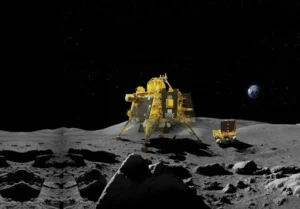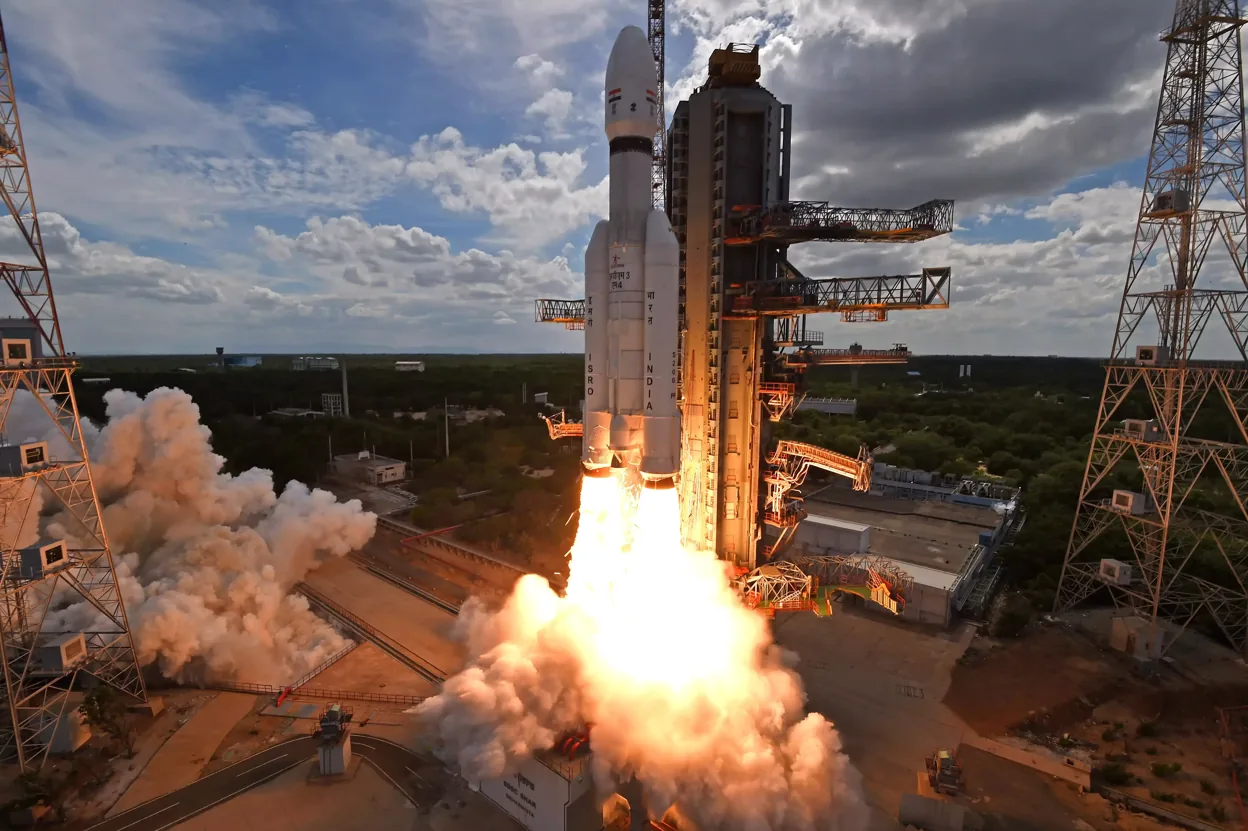India’s Space. India’s 2023 was all about sky-high achievements. It started with a bang as Chandrayaan-3 landed in the lunar south pole – an area no one had reached before. India joined the exclusive Moon-landing club, following the US, former Soviet Union, and China.
India’s Space: Moon Drama: “20 Minutes of Terror”
The big moment? When the Vikram lander, carrying the Pragyaan rover, started its descent to the Moon’s surface. For the Indian Space Research Organisation (Isro) scientists, it was nail-biting. Finally, the lander gently touched down in the tricky south pole region, making history. Over the next days, everyone tracked the rover’s movements, capturing data and images from the lunar surface.
India’s Space: Rover’s Adventure
The rover had its moments, sliding out from the lander and exploring the Moon at a snail’s pace. Covering over 328 feet, it dodged craters and checked out temperature differences and various chemicals in the soil. Isro was over the moon (pun intended), exceeding its mission goals.

Vikram’s Hop Experiment and Rocket’s Return
Isro bragged about Vikram’s “hop experiment,” a successful test that could help bring back samples or carry out future human missions. But that wasn’t all; they managed to bring back a part of the rocket that took Chandrayaan-3 to the Moon. These moves are vital for Isro’s future plans in space.
Peeking at the Sun
Right after the Moon touchdown, India sent Aditya-L1, its first Sun observation mission. The rocket’s headed to L1, a sweet spot where gravitational forces balance out, allowing a spacecraft to chill and observe. Once there, Aditya will keep an eye on the Sun 24/7, studying solar activity and its impact on Earth.
Gaganyaan’s Test Flight: Return from Space
India’s big question: Can we come back from space? Gaganyaan’s test flight in October aimed to answer just that. It’s part of the plan to send astronauts into space in 2025. Isro’s priority? To safely launch and bring back Indian astronauts. The test flight checked if the crew could bail out safely in case of trouble.
Successful Test: Spacecraft’s Escape
The test went smoothly. When the rocket reached a height of about 7.5 miles, the abort systems kicked in. The spacecraft used parachutes to land safely in the Bay of Bengal, where the Indian navy scooped it up. Isro plans to first send a humanoid robot before sending real astronauts into space.
India’s space adventures have hit new highs in 2023. From conquering the Moon’s unexplored territory to eyeing the Sun and prepping for human space missions, the country’s space dreams are soaring higher than ever before.



